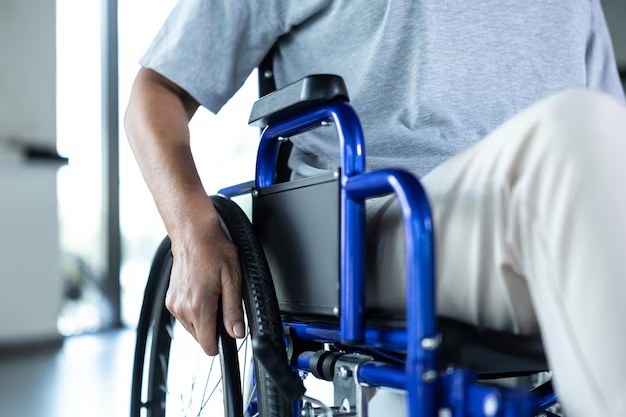Discover the Simple Steps to Get a Wheelchair Through Medicare
For many seniors and individuals with disabilities, mobility is a cornerstone of independence. Obtaining a wheelchair through Medicare can be a straightforward process if you know the right steps. Understanding what Medicare covers, and how to navigate the paperwork can help you secure the medical equipment you need at minimal or no cost.
Understanding Medicare Coverage for Wheelchairs
Medicare Part B, which covers medical equipment, often includes coverage for wheelchairs if certain conditions are met. The primary condition is that the wheelchair must be deemed medically necessary by a healthcare provider. Here's a step-by-step guide on how to navigate the process:
Step 1: Consult with Your Doctor
Your journey begins with a healthcare provider evaluation. Your doctor must document your need for a wheelchair in your medical records. This documentation is crucial for obtaining Medicare approval.
Step 2: Choose the Right Equipment
Not every wheelchair is automatically covered. Medicare helps cover manual wheelchairs, power-operated vehicles (scooters), and power wheelchairs based on your physical condition and the recommendation of your healthcare provider. Ensure your provider prescribes the correct type suited to your needs.
Step 3: Find a Participating Supplier
To get a wheelchair through Medicare, you must purchase or rent from a Medicare-approved supplier. These suppliers adhere to strict guidelines and pricing, ensuring you don't pay more than necessary. Often, they will also help with the billing and authorization process, reducing your paperwork burden.
Step 4: Secure Necessary Documentation
Once your provider prescribes the wheelchair, collaborate with the supplier to gather all required documentation. This typically includes:
- A signed prescription from your doctor
- Medical records supporting your need
- Other relevant documents proving Medicare eligibility
Step 5: Submit for Approval
The supplier, usually taking the lead, will submit the documentation to Medicare for prior authorization. After approval, you can arrange delivery or pickup of your wheelchair. Be mindful of the coverage terms, as Medicare often covers 80% of the cost after deductibles.
More Ways to Ease Financial Burden
Navigating healthcare costs can be daunting. Besides Medicare, there are numerous financial aid programs and resources available to ensure that those who need medical equipment can access it without financial strain. Here’s how you can further support your needs:
- Medicaid: In certain states, Medicaid complements Medicare services, potentially covering the remaining costs of the wheelchair. Check your state's guidelines.
- Veteran Assistance Programs: If you're a veteran, the Department of Veterans Affairs may provide support beyond Medicare.
- Non-Profit Organizations: Groups like the Muscular Dystrophy Association and United Cerebral Palsy may offer grants or equipment loans.
- Local Government Aid: Some states and municipalities have financial assistance programs for individuals with disabilities.
- Credit Card Solutions: Consider using medical credit cards specifically designed for healthcare expenses. Ensure you understand the interest terms and repayment conditions.
Resource Table
Here's a handy list of financial aids and resources to help you further:
- 📋 Medicaid: State-specific programs supplementing Medicare
- 🎖️ Veteran Assistance: Additional support for eligible veterans
- 🏢 Non-Profits: Grants and loans from reputable organizations
- 🌐 Local Government Programs: Financial assistance tailored to state requirements
- 💳 Medical Credit Cards: Specialized options to manage healthcare expenses
Acquiring a wheelchair through Medicare may seem complex, but with a structured approach, you can navigate it effectively. Beyond government programs, a wealth of resources is at your disposal to ensure financial assistance, making healthcare accessibility a reality for all.

Related Topics
- Am I Elgible For Medicare
- Am I Enrolled In Medicare
- Am I Qualified For Medicare
- Are Adult Diapers Covered By Medicare
- Are Chemotherapy Drugs Covered By Medicare Part d
- Are Colonoscopies Covered By Medicare
- Are Covid Tests Covered By Medicare
- Are Cpap Machines Covered By Medicare
- Are Cpap Supplies Covered By Medicare
- Are Dental Implants Covered By Medicare